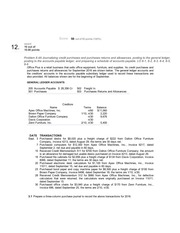
Without proper reconciliation, errors or missing transactions can go unnoticed, leading to inaccurate financial reporting, potential cash flow problems, and even legal consequences. After entering the statement date and ending balance, you’ll see a list of transactions that need to be reviewed and matched. Go through each transaction and ensure that ice swap rates 11 it matches the transactions on your bank or credit card statement. You can also mark transactions as cleared or add new transactions that may be missing. Reconciling your accounts in QuickBooks Online is a straightforward process that can help you keep your finances organized and accurate.

Instructions on How to Start Reconciling an Account in QuickBooks Online
By following these simple steps, you can ensure that your records match your bank or credit card statement and avoid any discrepancies or errors. Reconciliation is not just about matching numbers; it’s about ensuring the overall accuracy of your financial records. It helps you catch errors or fraudulent activities, such as unauthorized transactions or duplicate entries, that may affect your financial statements or cash flow.
Step 1: Select an account to reconcile
Each type has its own unique challenges and requirements, but the underlying goal is always to ensure accuracy and consistency in financial records. Just like balancing your checkbook, you need to review your accounts in QuickBooks to make sure they match your bank and credit card statements. Alternatively, to view an account reconciliation report later, click the “Settings” bookkeeper360 button. Then click the “Reconcile” link under the “Tools” heading in the drop-down menu to open the initial “Reconcile” page again.
Additionally, reconciliation provides businesses with a clear and up-to-date picture of their financial health. It allows you to analyze your cash flow, track expenses, and monitor income. This information is crucial for making informed business decisions, identifying potential risks or opportunities, and maintaining financial stability. When reconciling an account, the first bit of information you need is the opening balance. If you choose to connect your bank and credit cards to your online account, QuickBooks will automatically bring over transactions and also the opening balance for you. The information you entered from the account statement appears at the top of the page.
- When you have your bank statement in hand, you’ll compare each transaction with the ones entered into QuickBooks.
- You can also mark transactions as cleared or add new transactions that may be missing.
- During the reconciliation process, you will compare the transactions listed on your bank statement to the ones recorded in QuickBooks Online to ensure they match.
- When reconciling an account, the first bit of information you need is the opening balance.
Then click the “Apply” button in the drop-down menu to apply the filters you selected. You can remove applied filters by clicking the “X” button to the left of the applied filter’s name or by clicking the “Clear filter / View all” link. Now, simply compare the transactions on your statement with what’s in QuickBooks. The tricky part is making sure you have the right dates and transactions in QuickBooks so you know everything what is the difference between operating and non matches.
If you’re reconciling an account for the first time, review the opening balance. It needs to match the balance of your real-life bank account for the day you decided to start tracking transactions in QuickBooks. When you reconcile, you compare your bank statement to what’s in QuickBooks for a specific period of time. In the end, the difference between QuickBooks and your bank accounts should be US $0.00, although processing payments can sometimes cause a small gap. After completing an account reconciliation, a reconciliation report becomes available.
How to Start Reconciling an Account in QuickBooks Online
We recommend reconciling your checking, savings, and credit card accounts every month. Once you’ve reviewed and matched all transactions, QuickBooks will calculate the difference between your records and your bank or credit card statement. If the difference is zero, you’ve successfully reconciled your account. If the difference is not zero, you may need to review your transactions again to find any discrepancies. Making necessary adjustments in QuickBooks Online brings your financial records in line with the information on your bank statement.
To return to finish the account reconciliation later, click the “Settings” button and then click the “Reconcile” link under the “Tools” heading in the drop-down menu again. Then select the same account again and click the adjacent “Resume reconciling” button to continue from where you left. If needed, then enter any bank service fees or interest earned into the “Enter the service charge or interest earned, if necessary” section. Enter any bank service fees into the “Service charge” field and then select the date and the account used to track bank service fees from the adjacent “Date” and “Expense account” drop-downs. To enter interest earned, type the amount of interest earned into the “Interest earned” field. Then select the date and the income account used to track interest income, from the adjacent “Date” and “Income account” drop-downs.
Reconciliation is an essential process for businesses to ensure the accuracy of their financial records. It involves comparing and matching transactions between a company’s bank statements and its accounting software, such as QuickBooks Online. By reconciling these accounts, businesses can identify any discrepancies or errors and take the necessary steps to correct them. Reconciliation is the process of comparing and matching financial transactions between your bank statements and your accounting software, such as QuickBooks Online. It ensures that the records in your accounting system accurately reflect the transactions recorded by your bank. Reconciliation involves verifying the accuracy and completeness of both sets of records and resolving any discrepancies or errors that may arise.
The goal is to identify any discrepancies or missing transactions that may occur due to timing differences or errors in data entry. Reconciling your accounts is an essential part of managing your finances in QuickBooks Online. By following the steps above, you can reconcile your accounts accurately and ensure that your records match your bank or credit card statement. Remember to regularly reconcile your accounts to maintain financial accuracy and avoid discrepancies. Accurate financial records are crucial for making informed business decisions, preparing financial statements, and ensuring compliance with tax regulations.
